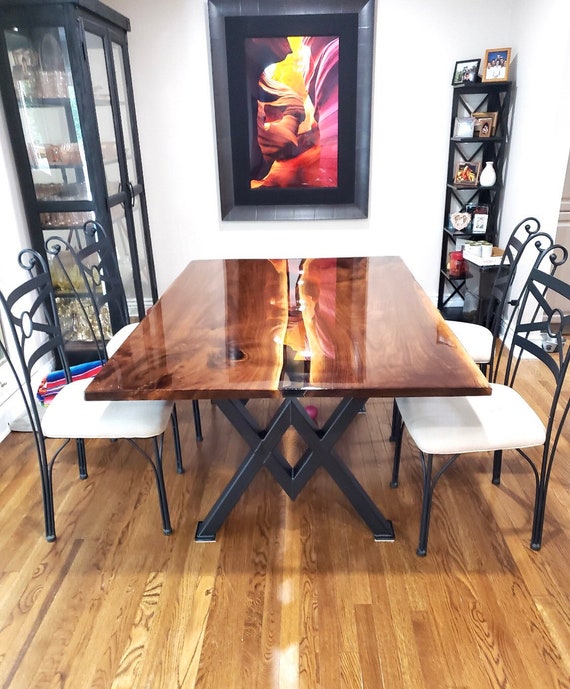Why Dining Room Table Legs Are Crucial for Your Table’s Stability
Why Dining Room Table Legs Are Crucial for Your Table’s Stability
Blog Article
Expert Tips for Installing Eating Space Table Legs for Optimum Stability
When it involves installing dining space table legs, accomplishing maximum stability is paramount for both capability and visual appeals. The process starts with selecting the appropriate materials and equipment, complied with by careful placement and consideration of weight distribution. Each step plays a crucial duty in guaranteeing that the ended up product stands up to everyday usage without compromising security or layout integrity. Nevertheless, understanding the nuances of these aspects can considerably influence the total result. What details methods can boost stability even additionally?
Select the Right Legs
When picking the appropriate legs for your dining-room table, it is important to take into consideration both functionality and appearances. The legs you choose will dramatically impact the total design and stability of the table. Examine the table's planned usage; if you anticipate frequent gatherings, sturdier legs, such as those made from solid timber or metal, may be a lot more appropriate, as they use raised durability and support.
Basic dining tables typically vary from 28 to 30 inches in height, so guarantee the legs align with this criterion for comfort. Tapered legs can include a contemporary touch, while transformed legs may communicate an extra traditional aesthetic.

Select Appropriate Equipment
How can the ideal equipment improve the security and longevity of your eating area table? The selection of proper equipment is important to guaranteeing that the legs of your table are safely affixed and able to endure normal use. Top notch screws, bolts, and braces give the necessary stamina to sustain the weight of the table, in addition to any added tons put upon it during dishes or gatherings.
When selecting screws, go with those made from durable materials such as stainless-steel or brass, which stand up to deterioration and preserve stability with time. The size of the screws is equally essential; they ought to permeate deeply right into the table's framework without jeopardizing stability. For bolted links, take into consideration making use of lock washing machines to prevent loosening due to vibration or movement.
Furthermore, utilizing corner braces can include additional support, especially for bigger tables or those with larger tops. These brackets distribute weight equally and aid preserve the table's shape. Guaranteeing that the hardware you pick is ideal for the details products of your table will further enhance its total security and durability, enabling you to appreciate your eating experience for many years ahead.
Ensure Proper Placement
Correct positioning of eating room table legs is essential for both visual appeal and practical security. To achieve ideal alignment, begin by gauging the wikipedia reference distance from the table's corners to the leg add-on points.
Utilize a level during setup to validate that each leg is vertical to the table top. It is advisable to mark the desired leg settings on the underside of the table with a pencil or concealing tape prior to protecting them.
Moreover, ascertain the alignment after the initial screws are tightened, as adjustments may be essential prior to totally safeguarding the hardware. By focusing on correct placement, you not just boost the table's overall design yet also ensure that it remains steady and practical for many years to find.

Take Into Consideration Weight Circulation
After making sure correct placement of the eating area table legs, it is very important to think about weight distribution to boost security and performance. dining room table legs. Proper weight circulation is critical in protecting against ensuring and tottering that the table can support its intended lots without danger of tipping or collapsing
When placing the legs, ensure they are positioned at equal ranges from the center of the table to evenly disperse the weight across the framework. Think about the weight of the tabletop and any type of items that will regularly hinge on it, such as decorative items or tabletop home appliances. Tables with larger surface areas ought to preferably have legs positioned closer to the corners, as this optimizes the base of support and reduces the threat of instability.
Furthermore, if the table is planned for use in a high-traffic location, take into consideration utilizing larger materials for the legs or adding maintaining elements, such as cross-bracing or a reduced rack - dining room table legs. These modifications can aid maintain balance and protect against moving throughout use. Eventually, a well-considered weight circulation technique will dramatically enhance the table's total performance, ensuring it remains a useful and eye-catching focal point for your dining space
Test Security Prior To Usage
Testing the security of the eating area table prior to usage is an essential step that should not be neglected. If the table shows instability, identify the legs or joints that may need modification.
Next, check that all fasteners and screws are tightened up effectively. Loosened connections can result in instability and go potential damage with time. If necessary, utilize timber glue on joints to boost stability, guaranteeing to permit ample drying time.

Final Thought
In verdict, the setup of dining-room table legs requires cautious factor to consider of materials, placement, weight, and equipment circulation to attain maximum security. By selecting strong legs and top notch fasteners, making sure precise positioning, and dispersing weight evenly, the architectural integrity of the table can be considerably boosted. Carrying out a stability examination prior to routine usage better makes sure that the table will certainly endure daily stress, consequently giving a trustworthy and secure dining experience.
When it comes to installing dining room table legs, accomplishing optimum security is vital for both capability and aesthetic appeals. The legs you select will dramatically influence the total layout and security of the table (dining room table legs). Typical eating tables commonly range from 28 to 30 inches in height, so guarantee the legs line up with this criterion for convenience.Correct placement of eating area table legs is important for both aesthetic charm and practical security.In verdict, the installment of eating space table legs needs careful factor to consider of products, alignment, weight, and equipment distribution to achieve optimum security
Report this page